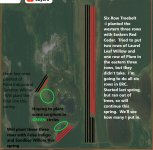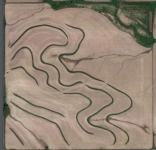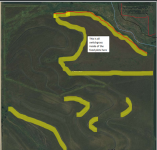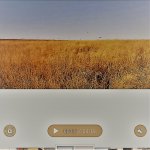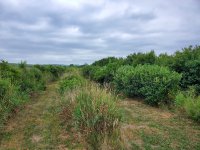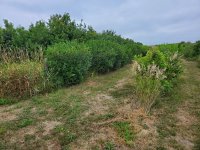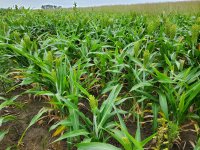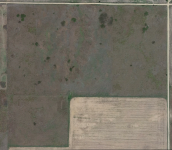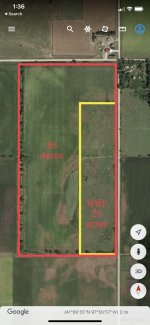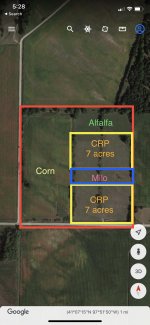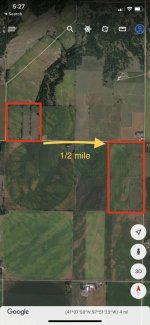Well, I had GH get me started, but mine is pretty rudimentary.
Below is what the farm looked like in about the fall of 2015. Most of the green area was filter strips except about 6 acres in the upper right corner. We had maybe 40 resident pheasants then. The following spring the the balance of the farm was put into CRP (CP-38). This program was tailored to pheasant recovery and had requirements for food plots, nesting cover and heavy winter cover. For me, this was a dream come true to create the habitat. The winding green lines are terraces.
View attachment 5204
Below is a more recent image of the farm (2020 or 2021). The yellow is food plots, the bulk is native grasses and forbs (nesting area), inside the almost blocked-in by food plots is a mono-block of 18 acres of switchgrass (heavy winter cover). Above the crude red line is a hedgerow of shrubs 4 rows (wild plum, arrow wood, aronia berry, gray dogwood and hazelnut). The blue line was a vague idea of the waterway, which we have filter strips on as we did prior to the crp. Beyond that in the upper right corner is not in a program and there we have rows of shrubs (2005-2007) which include nanny berry, cranberry, hazelnuts, june berry with some wild plums. For trees we have a row of eastern red cedar, a row of white oak (I know, perch trees, but a great deer food source, they just had acorns for the first time last fall) another row of eastern red cedars and 3 rows Austrian pines. In the upper right, way to the right, I started another windbreak (2017) made up of eastern red cedar and various pines and spruce trees. We don't hunt in the back corner (upper right), it is kind of their sanctuary now.
View attachment 5205
I took a video walking back out after I had my limit, this is the switch grass, only 4 feet tall or so this season with it being so dry. You can see a few birds in the air ahead of me. Recovery is a bit difficult in this cover, you really shouldn't try to pull off doubles.
View attachment 5206
Here are a couple pics of the hedgerow, It is coming along nicely. We mow short between the rows for now, should make easy moving for chicks.
View attachment 5207
View attachment 5208
And a late summer pic of a food plot
View attachment 5209

